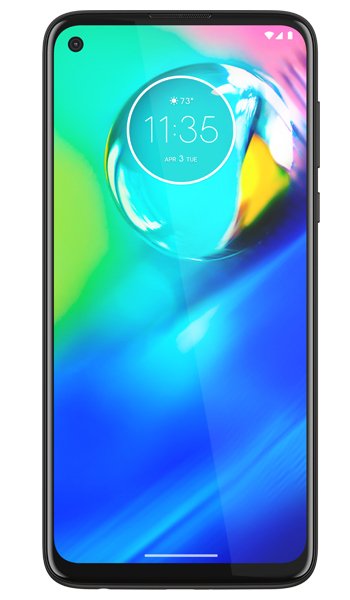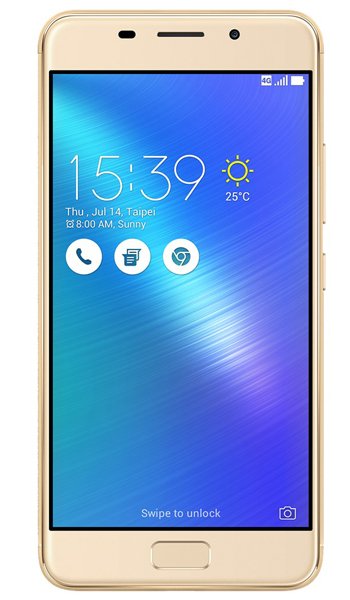Motorola Moto G Power vs Asus Zenfone 3s Max ZC521TL Comparison and Differences
Smartphone 1

Motorola Moto G Power
Smartphone 2

Asus Zenfone 3s Max ZC521TL
Smartphone 3
Motorola Moto G Power or Asus Zenfone 3s Max ZC521TL Specs Comparison
or
 Common specs
Common specs
| Brand and model | Motorola Moto G Power | Asus Zenfone 3s Max ZC521TL | |
| Rating | (+0) | (+0) | |
| Release date | 2020, February 7 | 2017, January | |
| Dimensions (HxWxD) | 159.9 x 75.8 x 9.6 mm | 6.3 x 6.3 x 2.98 in | ||
| Weight | 199 g | 7.02 oz | 175 g | 6.17 oz | |
| Body Build | Glass front, plastic back, aluminum frame (6000 series) | ||
| Case | buy from Amazon | buy from Amazon | |
| Colors | Smoke Black | Gold, Black | |
| Battery | 5000 mAh, Non-removable Li-Po | 5000 mAh, Non-removable Li-Po | |
| Battery life |
Stand by time - Up to 816 h (3G) Talking time - Up to 28 h (3G) |
||
| Approximate price | 180 EUR | ||
| Check price | from Amazon | from Amazon |
 Screen
Screen
| Technology | IPS LCD | IPS LCD | |
| Touchscreen | capacitive touchscreen | capacitive touchscreen | |
| Display colors | 16M | 16M | |
| Screen size | 6.4" in | 5.2" in | |
| Screen area | 100.7 cm2 | 74.5 cm2 | |
| Screen format | 16:9 (height:width) | ||
| Screen to body ratio | 83.0% | ||
| Screen resolution | 1080 x 2300 px | 720 x 1280 px | |
| Screen PPI /points per inch/ | 0 PPI | 282 PPI | |
| Screen protector | buy from Amazon | buy from Amazon |
 Camera and Video
Camera and Video
| Rear camera, main | 16 MP, Triple | 13 MP, Single | |
| Camera specs | -16 MP, f/1.7, (wide), 1/2.8'', 1.12µm, PDAF -8 MP, f/2.2, 13mm (ultrawide), 1/4.0'', 1.12µm -2 MP, f/2.2, (macro), 1/5.0'', 1.75µm |
-13 MP, AF, f/2.0 | |
| Functions | LED flash, HDR, panorama | Dual-LED dual-tone flash, panorama, HDR | |
| Video | 2160p@30fps, 1080p@30/60fps, 1080p@30fps (gyro-EIS) | 1080p@30fps | |
| Front camera, selfie | 16 MP, Single | 8 MP, Single | |
| Specifications | 16 MP, f/2.0, (wide), 1/3.0'', 1.0µm | 8 MP | |
| Functions | HDR | ||
| Video | 1080p@30/120fps |
 Performance
Performance
| Operating system - OS | Android 10.0 | Android 7 (Nougat); ZenUI 3 | |
| Chipset | - Qualcomm SM6125 Snapdragon 665 (11 nm) | - Mediatek MT6750 (28 nm) | |
| CPU | - Octa-core (4x2.0 GHz Kryo 260 Gold & 4x1.8 GHz Kryo 260 Silver) | - Octa-core (4x1.5 GHz Cortex-A53 & 4x1.0 GHz Cortex-A53) | |
| GPU | Adreno 610 | Mali-T860MP2 | |
| External memory | microSDXC (dedicated slot) | microSD, up to 256 GB (uses SIM 2 slot) | |
| Internal memory | 64GB 4GB RAM | 32 GB, 3 GB RAM |
 Benchmark
Benchmark
| Antutu 8 Total | 171982 | ||
| GeekBench 5 Single Core | 312 | ||
| GeekBench 5 Multi-Core | 1389 |
 Communication and Connectivity
Communication and Connectivity
| SIM card | Nano-SIM | Hybrid Dual SIM (Micro-SIM/Nano-SIM, dual stand-by) | |
| Network | GSM / CDMA / HSPA / EVDO / LTE | GSM / HSPA / LTE | |
| Bands | -2G - GSM 850 / 900 / 1800 / 1900 CDMA 800 / 1900 -3G - HSDPA 850 / 900 / 1700(AWS) / 1900 / 2100 CDMA2000 1xEV-DO -4G - LTE band 1(2100), 2(1900), 3(1800), 4(1700/2100), 5(850), 7(2600), 8(900), 12(700), 13(700), 14(700), 17(700), 18(800), 19(800), 20(800), 25(1900), 26(850), 29(700), 30(2300), 38(2600), 39(1900), 40(2300), 41(2500), 66(1700/2100), 71(600) |
-2G - GSM 850 / 900 / 1800 / 1900 - SIM 1 & SIM 2 -3G - HSDPA 850 / 900 / 1900 / 2100 - Global HSDPA 850 / 900 / 2100 - India -4G - LTE band 1(2100), 2(1900), 3(1800), 4(1700/2100), 5(850), 7(2600), 8(900), 18(800), 19(800), 26(850), 28(700), 38(2600), 41(2500) - Taiwan LTE band 1(2100), 3(1800), 5(850), 8(900), 40(2300) - India |
|
| Speed | HSPA 42.2/5.76 Mbps, LTE-A (2CA) Cat13 600/100 Mbps | HSPA 42.2/5.76 Mbps, LTE Cat4 150/50 Mbps | |
| GPRS | Yes | Yes | |
| Edge | Yes | Yes | |
| Wi-Fi | Wi-Fi 802.11 a/b/g/n/ac, dual-band, Wi-Fi Direct, hotspot | Wi-Fi 802.11 a/b/g/n/ac, dual-band, WiFi Direct, hotspot | |
| GPS | Yes, with A-GPS, GLONASS, BDS, GALILEO | Yes, with A-GPS, GLONASS, BDS | |
| NFC | |||
| USB | 2.0, Type-C 1.0 reversible connector | microUSB 2.0, USB On-The-Go | |
| Bluetooth | 5.0, A2DP, LE | 4.0, A2DP, EDR |
 Music and Audio
Music and Audio
| Radio | FM radio | FM radio | |
| Headphone jack | Yes | Yes | |
| Others | - Active noise cancellation with dedicated mic |
 Other features
Other features
| Sensors | - Fingerprint (rear-mounted), accelerometer, gyro, proximity | - Fingerprint (front-mounted), accelerometer, gyro, proximity, compass | |
| Other extras |
- Battery charging 10W - Splash resistant |
- Power Bank/Reverse charging |
Reviews and Opinions on Motorola Moto G Power and Asus Zenfone 3s Max ZC521TL
If you had to recommend one of these phones to a friend, which one would it be and why? Share your arguments using the Add Opinion button!
